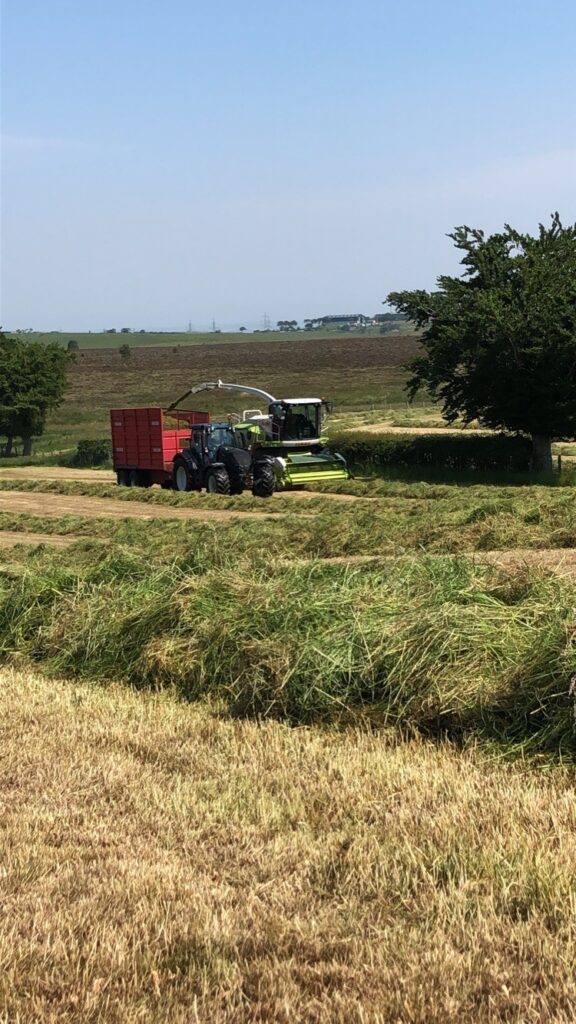How to reduce silage nutrient loss in the heat
26 June 2023The silage season is well underway with many farms having already successfully harvested a first cut and some even cutting or considering further cuts. However, with the hot and dry weather we have been experiencing across the country we need to remain conscious of the effect of the weather on silage quality.
GrassCheck GB figures show a downward trend for grass growth throughout the country from the beginning of June dropping from 78.2kg DM/ha/day to 59.7kg DM/ha/day. With growth slowing we are also starting to see an impact on nutritional quality. D value of the crop impacting intakes will drop by about 0.5 units a day from the point the crop shows flowering stems - this can amount to a loss of around 0.7 MJ/kg DM ME over a week.
Further losses in dry matter and sugars will also occur during wilting. This impacts the quality of preservation and nutritional availability in the crop, with high dry matter silage at a higher risk of secondary fermentation and moulds.
Top tips
Tips for making silage in hot weather:
- Aim for short rapid wilt ≤12hrs (i.e., best to cut in the a.m., ted, row and bale/pit by the p.m. if possible).
- Avoid overworking (tedding and conditioning) very high DM silage or crops high in clover due to the risk of leaf shatter.
- Aim for a dry matter of between 30-35% for optimum preservation of silage.
- High dry matter crops may benefit from a silage additive to aid preservation and prevent further nutrient losses in the clamp or bale.
- Review forage stocks at cutting to ensure there is sufficient availability to meet demand – also consider a buffer if earlier supplementation is required.
During this spell of hot weather, it is also important to continually monitor dry matter availability for grazing to maintain the performance of the stock on farm. We are currently in bulling for spring calving cattle, meaning it is crucial that energy demands are met to sustain both lactation and embryo implantation, additional supplementation may be required to sustain demand when growth is falling.
For sheep it is possible to wean lambs from between 8-12 weeks - if grazing is short it may be a consideration to wean lambs to free up availability for the growing lambs and reduce the demand of the ewes to ease grazing pressure.
For further guidance:
https://www.fas.scot/downloads/best-practice-procedures-for-making-baled-silage/
https://www.fas.scot/news/maximising-silage-quality/
Lorna Shaw – Ruminant Nutritionist.
Sign up to the FAS newsletter
Receive updates on news, events and publications from Scotland’s Farm Advisory Service

